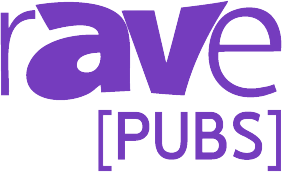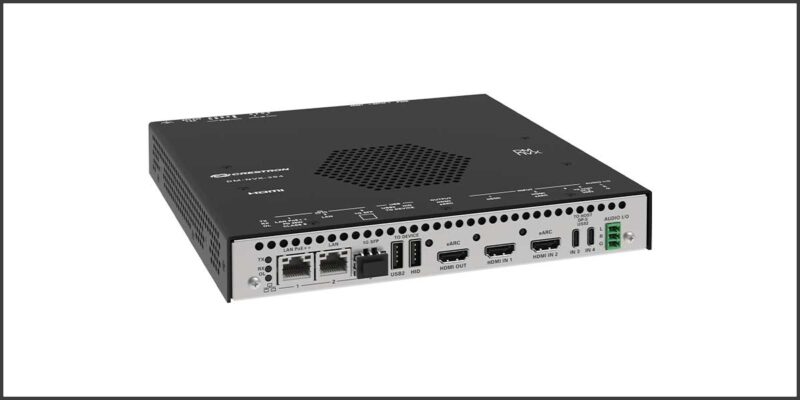Big Churches, Big Data
 The upside of adding Ethernet and/or Wi-Fi to audio, video and lighting gear is both the convenience and scalability of managing technology, but the more IP-addressable the A/V/L industry becomes, the more managing the vast amount of unique data becomes problematic for the end users. Churches are no different than many other venues when it comes to technology management, though the user base is often a mix of professionals, part-timers and volunteers.
The upside of adding Ethernet and/or Wi-Fi to audio, video and lighting gear is both the convenience and scalability of managing technology, but the more IP-addressable the A/V/L industry becomes, the more managing the vast amount of unique data becomes problematic for the end users. Churches are no different than many other venues when it comes to technology management, though the user base is often a mix of professionals, part-timers and volunteers.
The dissonance between more technology and better control & management increases with every new IP address.
The Standards Battleground
It is very difficult to navigate the entrenched battle lines of various organizations that have made their own standards in the relative vacuum of a closed industry model. AES, for example, has done a tremendous job of creating (and revising) standards for audio performance and transmission, but it’s largely done it exclusive of systems integration. A product-focused or technology-focused standard often misses the interoperability standards necessary for crossing technology boundaries over video and/or lighting. Similarly, SMPTE has done a great job with video (and broadcast, to be fair), but leaves the communication and reporting of non-video technologies up to the manufacturers. This leads to the dreaded proprietary formats that have made every systems integrator and consultants jobs harder.
Total system management is possible with third party automation/control vendors. Yet the standards of AES, InfoComm, SMPTE, UL and others are generally based on either technology performance or system performance, but not both. The number of dealers, systems integrators and contractors using these standards (let alone coordinating the standards) is precious few, providing a clear case for unified systems standards.
Who knows if the political wrangling necessary to mesh the various governing organizations play nice together will ever be accomplished, but one can dream; and, perhaps even change an industry with the principles of open-source as a base platform for developing and sharing overall systems integration standards.
The End User Dilemma: Churches Stuck in the Middle
Meanwhile, Sunday continues to come around every seven days, and church technical leaders are left finding ways of making their audio, video and lighting technology work in concert. The trouble is that they’re almost always forced to play in three disparate ecosystems with very different control and reporting options.
The case can be made for using unified control platforms such as AMX, Crestron and others, but even this is plagued (in my opinion) with even more proprietary messiness; in reality, a fourth digital ecosystem to navigate and operate, adding to the digital clutter of the end user.
The Real Standard Is the Web
I’ve written previously about the need to make equipment IP addressable, so I want to see more, not less, options for end users to take control of their equipment. Specifically, creating either intranet or Internet secure connectivity on a browser is key, as the number of devices (mobile smartphones, tablets, laptops, desktops) and content curation (cloud, local devices) tools expand. The browser is everywhere; thus, access should also be everywhere. What’s clear is that regardless of the product or technology standards, the real standard for systems unification is the web.
Today, that means HTML 5, which leaves manufacturers, integrators, third party vendors and end users with a great deal of flexibility in how they decide to organize, manage, and report on the performance of a system, not merely a component.
Why This Makes Perfect Sense and Can Never Work
Well outside the limits and reach of the AV industry, manufacturers have had a singular motivation to make their hardware and software proprietary: revenue. When in doubt, follow the money. From non-standard connections (Apple’s Thunderbolt port) to specialized power supplies (wall warts with dozens of connection types) to even creating unique cables (CresNet or AxLink anyone?), there’s extra money to be made when the user is forced to buy proprietary.
I may be just cynical enough to think that as long as some of the “big boys” of the industry keep their own versions of control and connectivity, they’ll keep the cash, too. But for every one of those ginormous industry giants, there are dozens or even hundreds of smaller companies that can change the game by moving to browser-based intranet and Internet control and management options for end users. Given enough time and enough success, who knows? Maybe we’ll never see another i.Link again?
Rise of the Machines (Dashboards)
Big Data on the CRM side of the world has resulted in a plethora of companies vying for the business of parsing, sorting, displaying and sorting all of that data. The idea is that given a connector to the various sources of data, it’s possible to soft and pivot data from multiple sources into meaningful charts, graphs, and readouts, enabling users to visualize data in useful ways.
Yes, the control guys have been giving us on/off status updates for decades, but imagine deciding to build a dashboard that shows the last dates of firmware updates, backups, and maintenance cycles. Or the power drain of equipment in “on”, “standby” and even “off” states – against a cost amortization trend line. There are limitless options for providing really useful dashboards to create more efficient systems, better processes for managing equipment in multiple venues, and/or trend analysis to understand peak usage days and times for calendaring maintenance schedules based on optimum downtimes.Big Data in the AV industry means we can know more about our lighting, power, video, and audio components from a system level perspective.
All that is required is the industry deciding on how to build this out for the Web and manufacturers agreeing upon the kinds of data reporting necessary.
Oh well. At least it was a good idea.
Should this good idea be abandoned simply because it is hard? What say you? Comment below – we want to hear from you.





